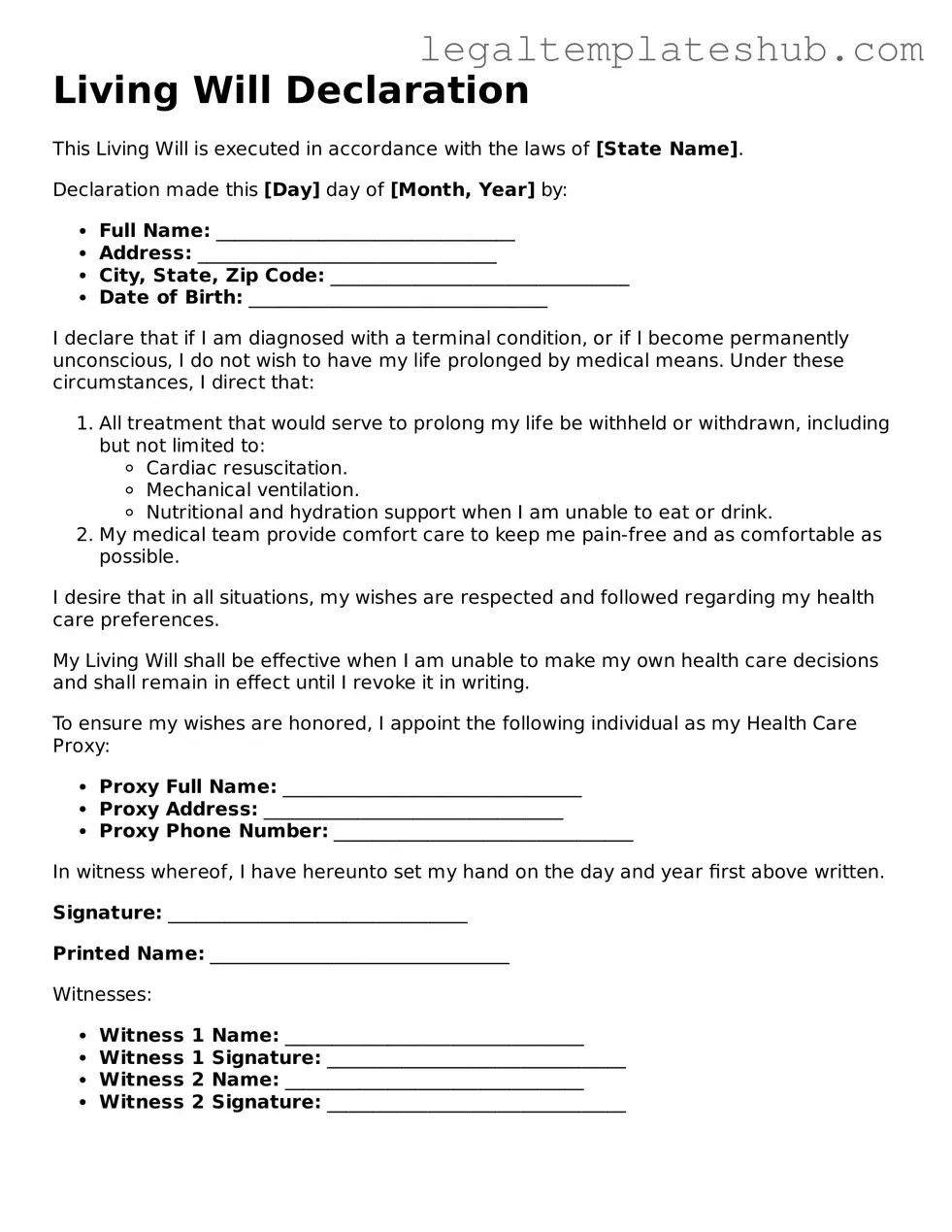Printable Living Will Template
A Living Will is a legal document that outlines your preferences for medical treatment in the event that you become unable to communicate your wishes. It serves as a guide for healthcare providers and loved ones, ensuring that your choices regarding life-sustaining measures are respected. If you're ready to make your wishes known, consider filling out the Living Will form by clicking the button below.
Access Editor
